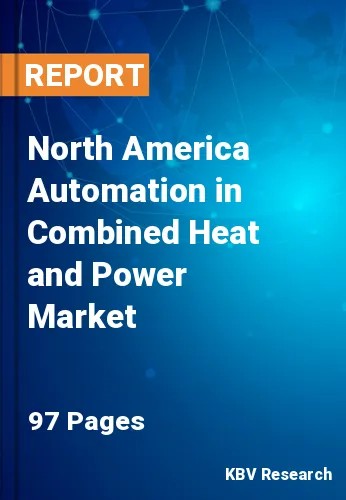The North America Automation in Combined Heat and Power Market would witness market growth of 7.0% CAGR during the forecast period (2022-2028).
It is feasible to control the combustion process against fluctuations in production, fuel quantity, fuel quality, and combustion conditions by optimizing combustion. It decreases flue gas oxygen content, nitrogen oxide (NOx) emissions, and carbon monoxide (CO) emissions while stabilizing the combustion process and increasing boiler efficiency. The efficiency of CHP is higher than that of producing electricity and useable thermal energy (or heat) separately. CHP is not a standalone system but rather an energy system made up of various parts that work together to provide heat that can be used in a process as well as power.
In that it also produces heat and electricity, a cogeneration facility is similar to a CHP plant. Cogen technology, as opposed to CHP, generates energy using a simple cycle gas turbine. Steam is then generated using the energy from the gas turbine exhaust. The steam is then entirely utilized in other processes, as opposed to CHP, where a small fraction is sent to power a steam turbine. A decentralized, energy-efficient way to generate both heat and electricity is with a CHP power plant. CHP facilities are capable of generating electricity for a district or a utility or a specific building or facility.
With 25 GW in the industrial sector, 2 GW in the commercial world, and 43 GW in the electric power sector, the combined heat and power (CHP) producing capacity in the United States at the end of 2011 was close to 70 gigawatts (GW), or approximately 7% of the country's total capacity. Industrial CHP plants' generators ran at maximum capacity 57% of the time on average in 2011, or a capacity factor of 57%. CHP installations are also typical in places like California and New York that have a history of utility regulation that supports CHP. Utilizing waste heat from the generation of electricity, CHP technology produces both useable thermal energy and electricity from a single source of energy.
The US market dominated the North America Automation in Combined Heat and Power Market by Country in 2021, and would continue to be a dominant market till 2028; thereby, achieving a market value of $4.4 billion by 2028. The Canada market is expected to grow at a CAGR of 9.4% during (2022 - 2028). Additionally, The Mexico market would witness a CAGR of 8.4% during (2022 - 2028).
Based on Component, the market is segmented into Controllers, Sensors, Switches & Relays, Drives, and Others. Based on Control & Safety System, the market is segmented into Supervisory Control & Data Acquisition System (SCADA), Programmable Logic Controller (PLC), Human Machine Interface (HMI), Distributed Control System (DCS), and Systems Instrumented Systems (SIS). Based on countries, the market is segmented into U.S., Mexico, Canada, and Rest of North America.
Free Valuable Insights: The Global Automation in Combined Heat and Power Market is Estimated to reach $20 Billion by 2028, at a CAGR of 7.2%
The market research report covers the analysis of key stake holders of the market. Key companies profiled in the report include Omron Corporation, ABB Group, Honeywell International, Inc., Schneider Electric SE, Siemens AG, Emerson Electric Co., Mitsubishi Electric Corporation, Valmet Oyj, Yokogawa Electric Corporation and Rockwell Automation, Inc.
By Component
By Control & Safety System
By Country
Our team of dedicated experts can provide you with attractive expansion opportunities for your business.

